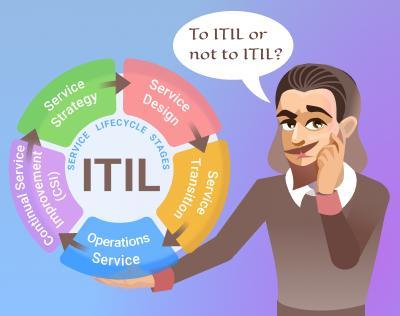Operations | Monitoring | ITSM | DevOps | Cloud
ITIL
Modernizing ITSM with ITIL 4: Intelligent automation
Generative AI has the world thinking about automation now more than ever before. The Information Technology Infrastructure Library (ITIL) has prioritized it from the start. ITIL has advocated for automation as a transformative tool for organizations to deliver business value, accelerate change, and reinvent service configuration management. By handling mundane tasks, automation can empower people to do more innovative and effective work.
Modernizing ITSM with ITIL 4: CMDB & service configuration management
The shift of the Information Technology Infrastructure Library (ITIL) 4 from process to value helps IT service management (ITSM) service providers demonstrate business value and adapt to change so they can meet business needs and customer expectations and thrive in an ever-changing technology landscape. However, in the face of an increasingly complex digital business environment, managing the diverse components of IT service operations can be challenging.
Modernizing ITSM with ITIL 4: Change enablement
The Information Technology Infrastructure Library (ITIL) is a customer-centric framework that promotes governance, collaboration, and continuous improvement. At a time when IT service management (ITSM) is changing with new technology, shifting regulatory requirements, and decentralized teams, this is vital. We explored how the ITIL 4 service value system helps ITSM service providers generate business value through the creation, delivery, and continuous improvement of services.
COBIT vs ITIL: What are the Differences?
As companies expand their operations, they transition from ad hoc to strategic approaches in their quest for optimal IT service management. Frameworks like ITIL (Information Technology Infrastructure Library) and COBIT (Control Objectives for Information and Related Technologies) play pivotal roles in this endeavor.
Bridging the ITIL vs DevOps Mindset: CI/CD Best Practices for ITIL Organizations
DevOps practices in software development have revolutionized the way updates are released. However, many companies entrenched in ITIL practices find it challenging to seamlessly integrate with the DevOps practice of Continuous Integration and Continuous Delivery/Deployment (CI/CD). This is because ITIL focuses on stability, which suits older systems, while DevOps is ideal for modern setups with its agile, automated practices.
When should you upgrade to a CMBD
Nobody is Perfect: ITIL Limitations You Should Know About
Discussing the pitfalls of ITIL, and why it’s worth nevertheless.









